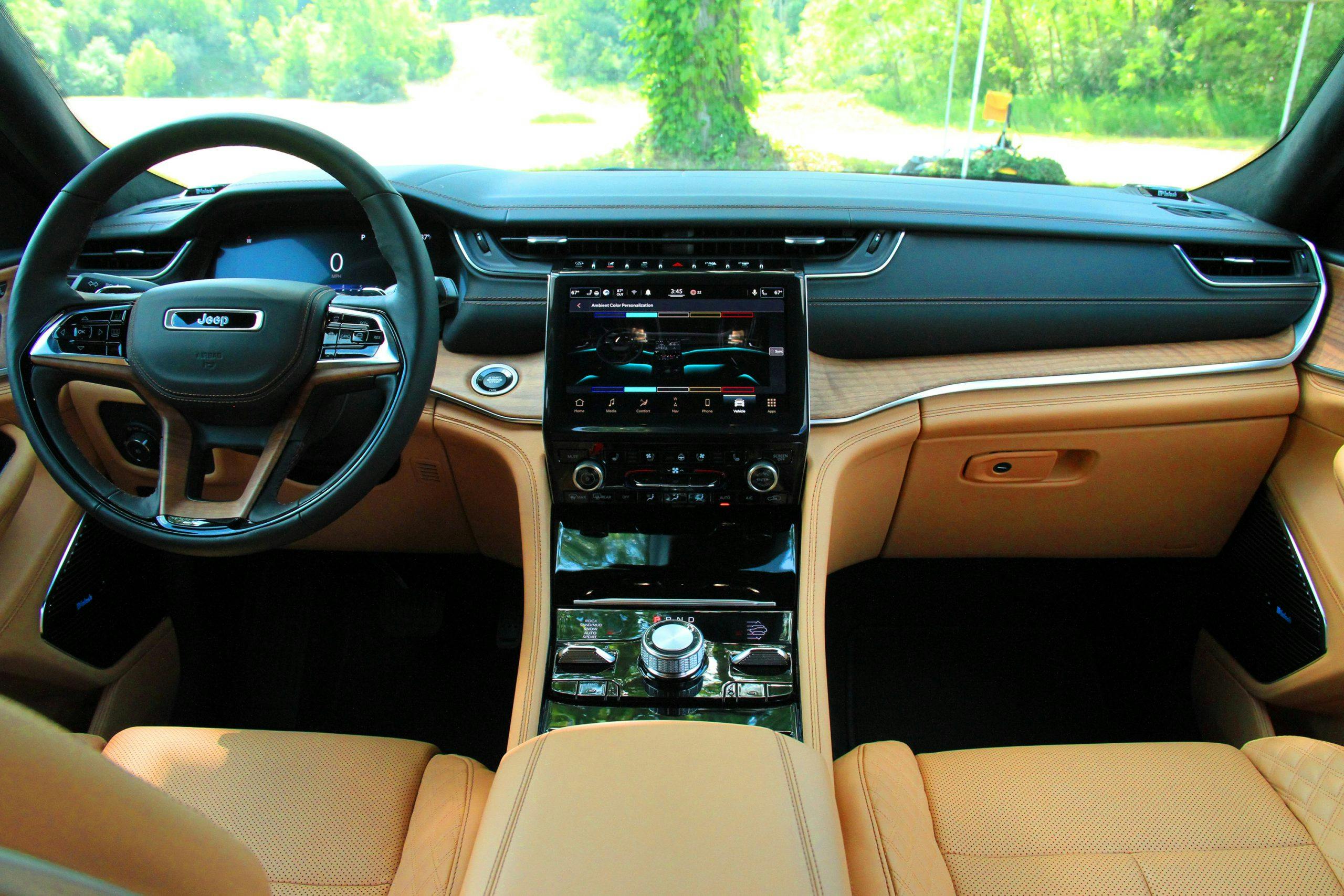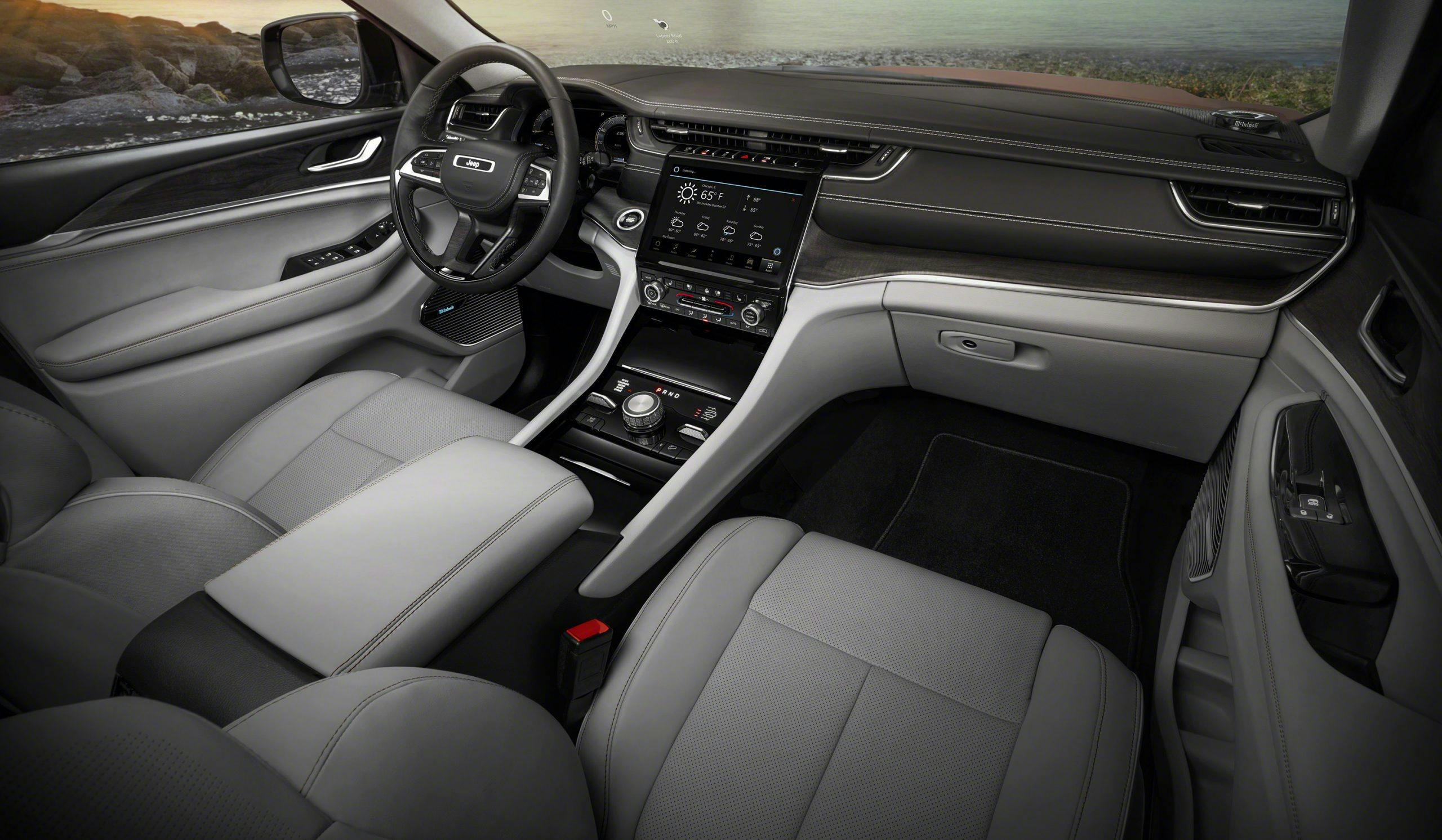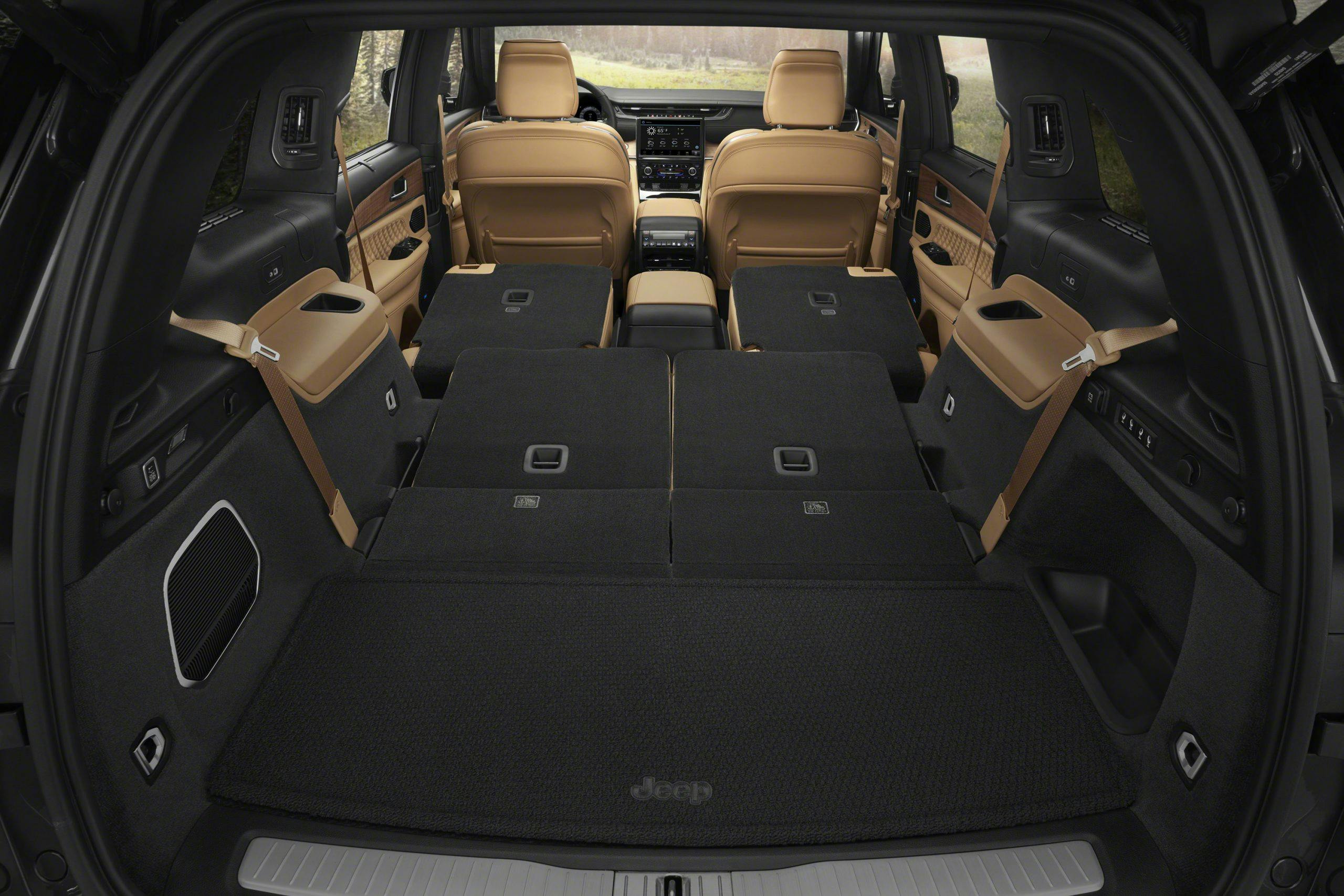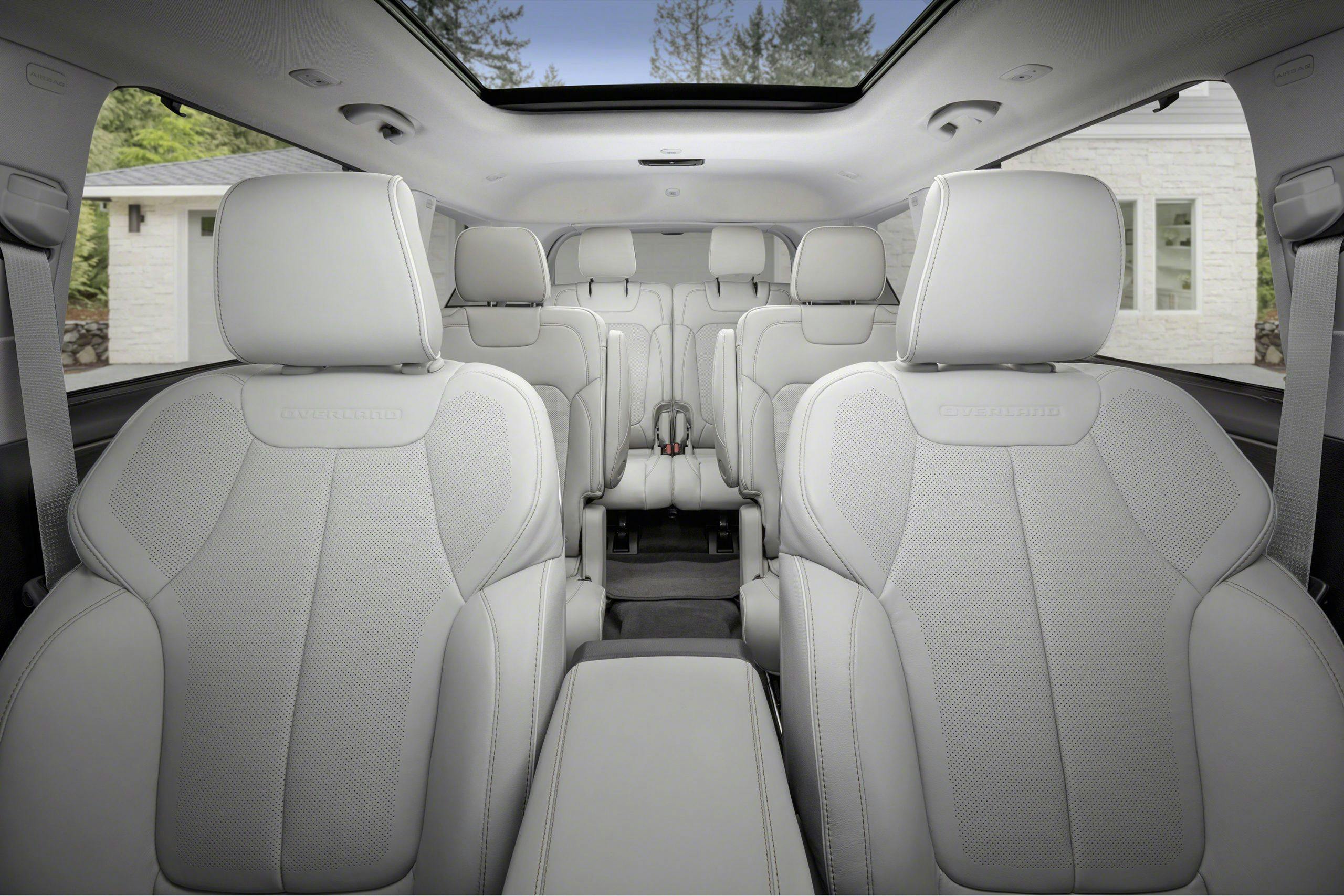Media | Articles
Review: 2021 Jeep Grand Cherokee L
By all accounts, Jeep is late to the three-row SUV game. There was the 2005–2010 Commander, sure, but that was little more than a barely-stretched Grand Cherokee with a two-seatbelt penalty box stuffed in the trunk. While the crossover craze reached the fever pitch of the past few years, a fully-executed, purpose-built mega-Jeep was more than a little conspicuous by its absence. Without a full-size offering into which Jeep could usher growing families, customers trading in their Grand Cherokees and four-door Wranglers were forced into the welcome arms of the competition—Ford Explorers, Chevy Traverses, Honda Pilots, and the like.

Now, it will be up to the new 2021 Grand Cherokee L to make up for lost time. Jeep is keen to enter an already overcrowded pool with a big splash, and first impressions confirm that Jeep’s new three-row is a luxurious American cannonball.
Jeep invited us to Detroit to sample the Grand Cherokee L range on the highways and byways of southeast Michigan. We got seat time in modestly optioned base Laredo trim cars as well as loaded range-topping Summit Reserve packages. The trim range spanned a substantial price gap—the Laredo 4×4’s as-tested price was $44,120 (including a $1695 destination fee) while the Summit Reserve came in almost exactly 20 grand more at $64,280 as-tested. Rather than highlight a specific trim, we’d rather serve up a sense of what to expect from the vehicle as a whole, along with a grab bag of key details you’ll want to keep in mind before strolling into the dealership.
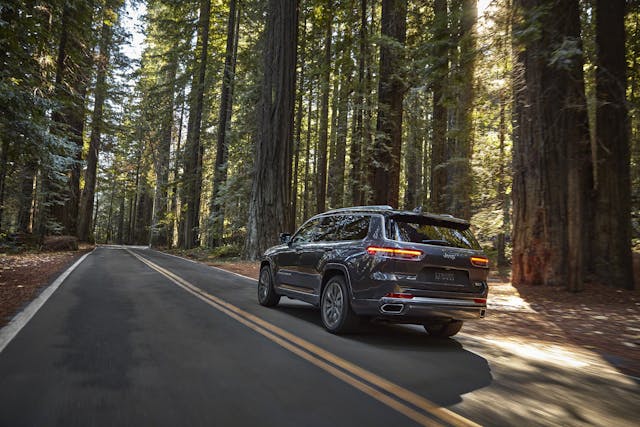
Every Jeep Grand Cherokee—L or otherwise—rides on a new platform, finally. Considering the current Grand Cherokee’s underpinnings date back to the Daimler era, some new bones are most definitely overdue. The L adds 7 inches of wheelbase and 15 inches of overall length relative to the structure it’s replacing, courtesy of its new WL75 platform that allows for a third row with 30.3 inches of legroom. That’s short of the Explorer’s 32.2 inches and the Atlas’ 33.7 inches, but still comfortable enough for your six-foot author. Thankfully, tossing the two-row into a taffy puller doesn’t have any adverse effect on the SUV’s appearance. Rather than resembling some botched iPhone panorama shot, the GC L wears a simplistic and cohesive adaptation of an already handsome design.
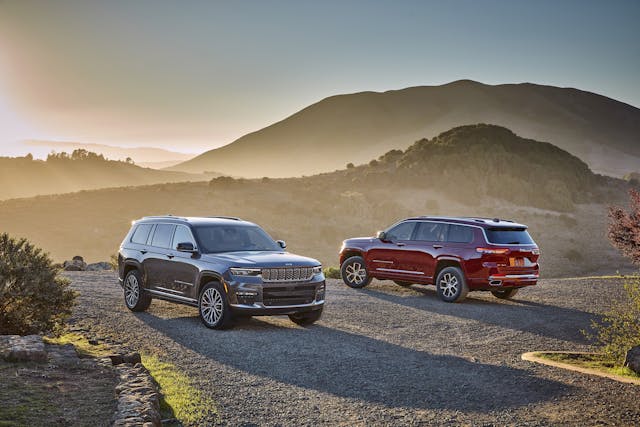
An overhaul of the interior gives the cabin a much wider feel, even though the new car is physically no wider than the outgoing Grand Cherokee. Credit for that goes mostly to the brushed metal “wing” accent that spans the width of the dashboard and seems to stretch out onto the adjacent door cards. Above this design element you’ll find either an 8.4-inch of a 10.1-inch touchscreen infotainment system. The cheapest way to score the larger screen is to pick the Limited trim and shell out an extra $995—worth it if not solely for the surrounding plastic it eliminates. Switchgear feels appropriate for the lower trims, but once the sticker price creeps up into the $60,000 range, you want every knob and dial feeling a cut above the generic Hertz lot. The new knurled steel rotary shift controller is a notable exception, which feels worthy of a premium SUV.
The new Uconnect 5 infotainment system is five times faster than the one it replaces, according to Jeep. We didn’t notice a massive difference, but that’s largely because its predecessor remains one of the simplest and most usable touchscreens available. Helpful updates like a customizable home screen layout and the always-available one-touch access bar for your favorite apps make a great system even better. Again, on lower-trim models, the vast expanses of black plastic down around the shift knob don’t do this aspirational SUV any favors. On higher trims, that negative space is occupied by toggles for the height adjustments (for Quadra-Lift-equipped vehicles) and the drive modes.
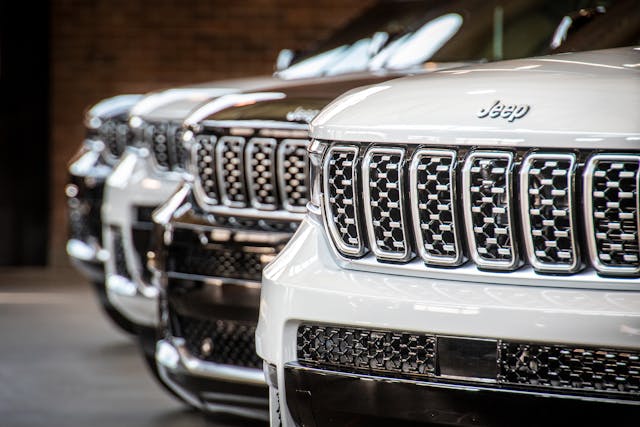
Second- and third-row seating should be livable for the lion’s share of adults and teenagers. To ease third-row ingress, Jeep engineered a clever slide-and-tilt hybrid seat design for the second row. It nicely reduces the amount of preliminary pilates necessary to nestle your average softball dad into position back there. As smart as the seating tech is, storage tech is lacking. Big time. The Grand Cherokee L’s front door cards have next to no stowage space in them, save for a shallow divot in the arm rest and a similarly meager shelf at foot-level. Couple this with stingy storage in the center stack and families will see assorted junk spilling over in a matter of months. Purse-toters will be similarly disappointed to learn that they’ll need to sling their bags into the passenger footwell or behind them to the second row.
One of two engines powers the new Grand Cherokee L: the ubiquitous 3.6-liter Pentastar V-6, or the 5.7-liter Hemi V-8 found in other Stellantis products like the Ram 1500 and the Charger R/T. The six boasts 293 horsepower and 260 lb-ft of torque, while the big eight offers 357 horsepower and a hefty 390 lb-ft of torque. Both engines pair exclusively with the ZF TorqueFlite eight-speed automatic. Because this is a Jeep, there are three 4×4 systems offered: Quadra-Trac I, which offers a single-speed active transfer case; Quadra-Trac II, which offers a two-speed active transfer case with low range gear reduction; and Quadra-Drive II, which calls upon that same two-speed active transfer case but also throws in an electronically-actuated limited-slip rear differential. All three systems employ a front axle disconnect during normal driving conditions, an eye toward fuel efficiency.
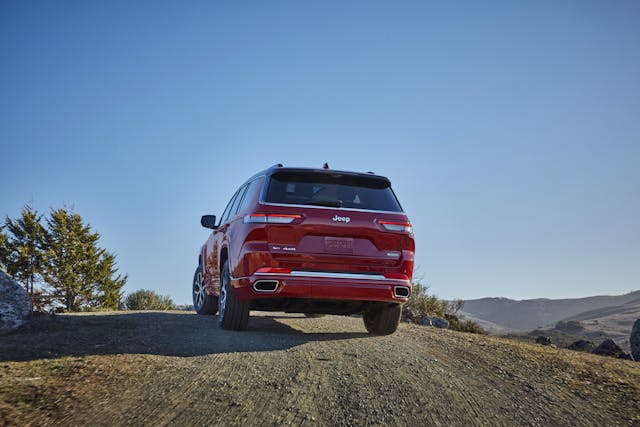
The new GC L drives like the old one, which is to say: very well. Most of our on-road time was spent in the low-spec Laredo; with 18-inch wheels and plenty of sidewall, the Laredo confirms that Jeep is still a master at road damping with large tires. The Grand Cherokee L has four-corner independent suspension, and if you spring for higher trims like the Overland, Summit, or Summit Reserve, you can nab the Quadra-Lift air suspension. While Quadra-Lift can help hoist the vehicle’s skirt (up to 10.9 inches of ground clearance) in some gnarly off-roading scenarios, we found the standard damping to be plenty adequate for on-road duty. Don’t spring (get it?) for one of those top trims if it’s for the air-suspension alone.

If it’s the Hemi that you covet, then by all means step up to the Overland, Summit, and Summit Reserve trims. Even though the Grand Cherokee L is roughly just 175 pounds heavier than the two-row Grand Cherokee, the Pentastar feels a tad strained here. The eight-speed does an admirable job to keep the V-6 in the meat of its power band, and around-town cruising is smooth, but punch the throttle in pursuit of a quick highway pass and you’ll be left wanting. Although we didn’t get a chance to drive the V-8-powered Grand Cherokee L on the road, we’d bet its 120 extra lb-ft of torque and 64 additional ponies would help considerably. That’s to say nothing of the impressive towing capability the Hemi brings—with a 7000-pound boat and trailer in tow, the Grand Cherokee L felt strong and stable during our test pull on a closed skidpad, despite being just 200 pounds shy of its max tow rating.

Towing is one thing, but here’s a certain brand ethos that has to be upheld by Jeep’s new human hauler: ridiculous off-road capability. Tom Seel, Vehicle Line Executive for the new Grand Cherokee called this high bar “earning the seven slats,” in reference to the iconic grille. We tossed a V-8-powered Grand Cherokee L Overland trim—equipped with the off-road group (skid plates, beefier axles, and that coveted eLSD)—around an off-road course at the Chelsea Proving Grounds. As far as Jeeps go, the Grand Cherokee L earns its slats, provided you correctly equip it. We bashed our way through rock crawls, hung wheels in articulation obstacles, and even canted the whole mess to some 30 degrees on an off-camber rock pile exercise. If you absolutely must have this degree of capability for your family of six, one of the following situations likely applies: A) You’re Kanye West’s weird Montana neighbor, and you make it near-impossible for the mailman to get to your front door; B) You spend every waking weekend plowing trailside shrubbery and regularly enjoy sending little Henry’s iPad out the second-row window; C) A Land Rover Discovery is either too bloated, too expensive, or too European for your tastes. Or maybe you just want to feel over-prepared for next season’s angriest blizzard.
All kidding aside, this is a pricey vehicle positioning itself as a premium contender—Laredos start a few thousand more than bottom-shelf offerings from Ford and Chevy. We’d expect those simply seeking all-weather aptitude and something of a value play to find their solutions in the Volkswagen Atlas, Honda Pilot, or Kia Telluride. Look for upper-trim Overland, Summit, and Summit Reserve models to be the hot sellers. Equipped as such, the Grand Cherokee L can be understood as an American take on the Land Rover Discovery formula. At the end of the day, what matters most to Jeep is that it won’t have to suffer customers outgrowing its lineup. And when that big C-suite promotion finally happens, the sumptuous Grand Wagoneer will be ready and waiting.

2021 Jeep Grand Cherokee L Summit Reserve 4×4
Base Price / As Tested: $38,690/$64,280
Highs: Exceptional off-road capability we know and love from Jeep, now suitable for seven! Upper-trims feel worthy of consideration among the Land Rovers and the Lincolns of the world.
Lows: Not a value play. Even the lowest trims gets pricey quick, and their interiors feel under-equipped out of the box. High-trim cars all but demand Hemi power.
Summary: If you seek serious capability from your luxurious unibody three-row—whether solely for parking lot posturing or for actual use—the Grand Cherokee L is the best solution on the market right now. That is, if you can stomach the cost.

